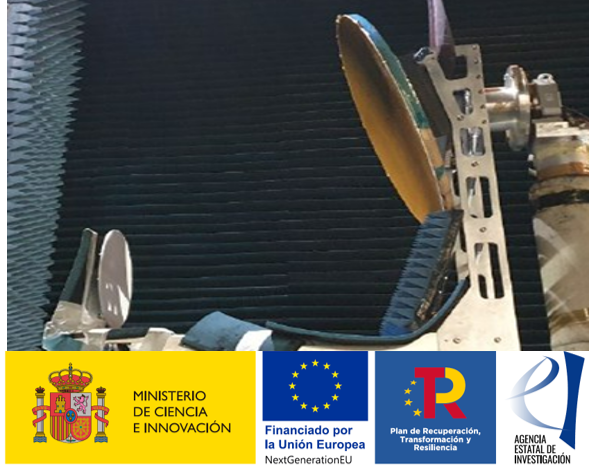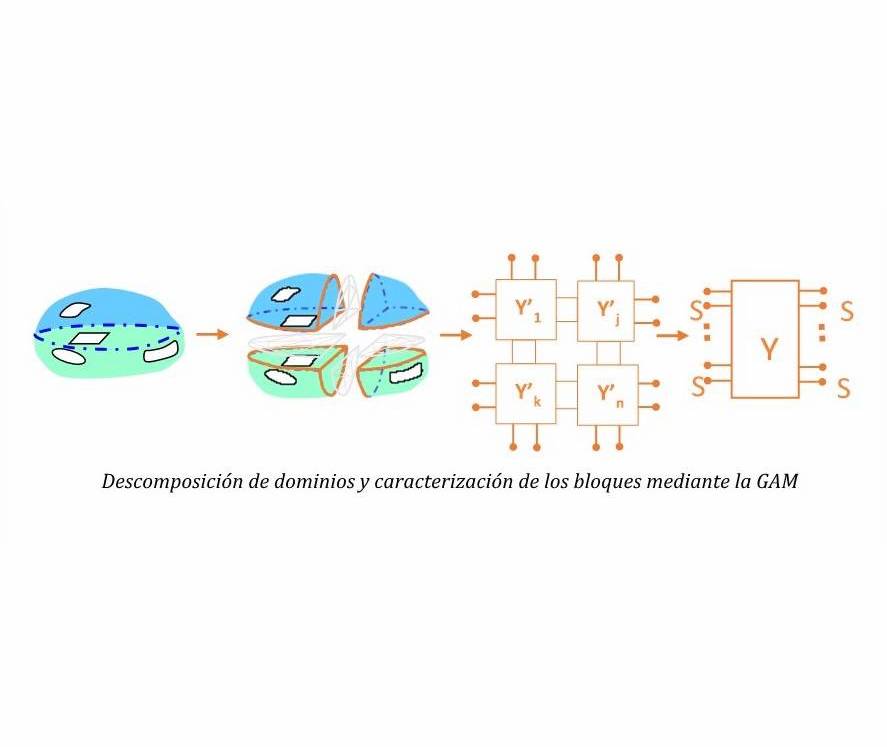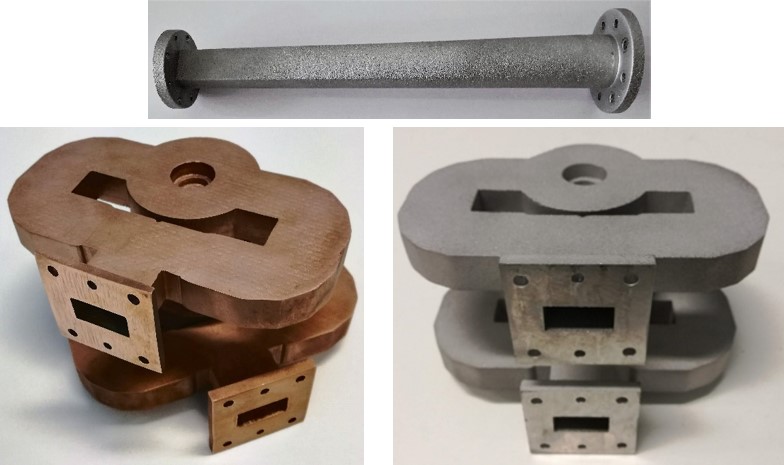HYBRID METHODS
“New hybrid methods for optimizing high-frequency circuits and antenna arrays (TEC2017-83352-C2-1-P)”
2018-2020
New hybrid methods have been implemented, which add new capabilities for efficient analysis of passive microwave circuits and antennas. Some of them are design-oriented in SIW (Substrate Integrate Waveguide) technology, since it is an emerging low cost technology.
ADDMATE
“New additive manufacturing technologies for passive devices in microwave and millimeter bands (TEC2016-76070-C32R)”
2017-2019
New additive manufacturing techniques are changing the development model in many technology sectors. The objective of the Project has been to develop waveguide devices for space applications and power combination using Selective Laser Sintering using aluminum and copper powder mixtures. Different devices such as modal converters, polarizers and transitions have been manufactured.
SPADERADAR
Space Debris Radar
Comunidad de Madrid, S2013/ICE-3000 (2014-2018)
Several technologies were developed for a space debris detection radar. When located on space platforms such as the International Space Station or communications satellites, the radar would be used to prevent collision with dangerous objects.
REALSAT: “Reflectarray-based Antennas for SmallGEO and LEO Communications Satellites” PDC2021-120959-C21-2”
An antenna configuration has been demonstrated in Ka-band that generates multiple beams to provide broadband internet access from geostationary satellites. Current satellites use 4 reflectors to generate a cellular coverage with 2 frequencies and 2 polarizations.

The antenna consists of a parabolic polarizer reflectarray (RA) and a planar sub-RA fed by an array of feed-horns to generate a cellular coverage. The sub-RA separates the beams of each linear polarization, which are then transformed into circularly polarized high-gain beams (LHCP and RHCP). This configuration allows to reduce the number of antennas on the satellite (from 4 reflectors to 2 reflectarrays).
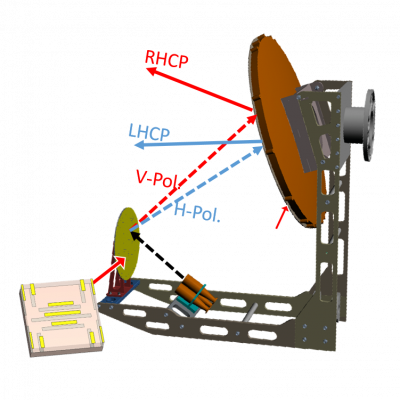
A demonstrator, scaled ½ of a real antenna, consisting of a 90 cm parabolic RA and a 38 cm flat sub-RA fed by 3 horns, has been designed, built and tested. The measurements demonstrate the generation of 6 beams in transmit (19.2- 20.2 GHz) and receive (29-30GHz) frequency bands. This technology allows a reduction in the mass and volume of the satellite payload, being an interesting alternative for geostationary satellites with reduced dimensions and cost.
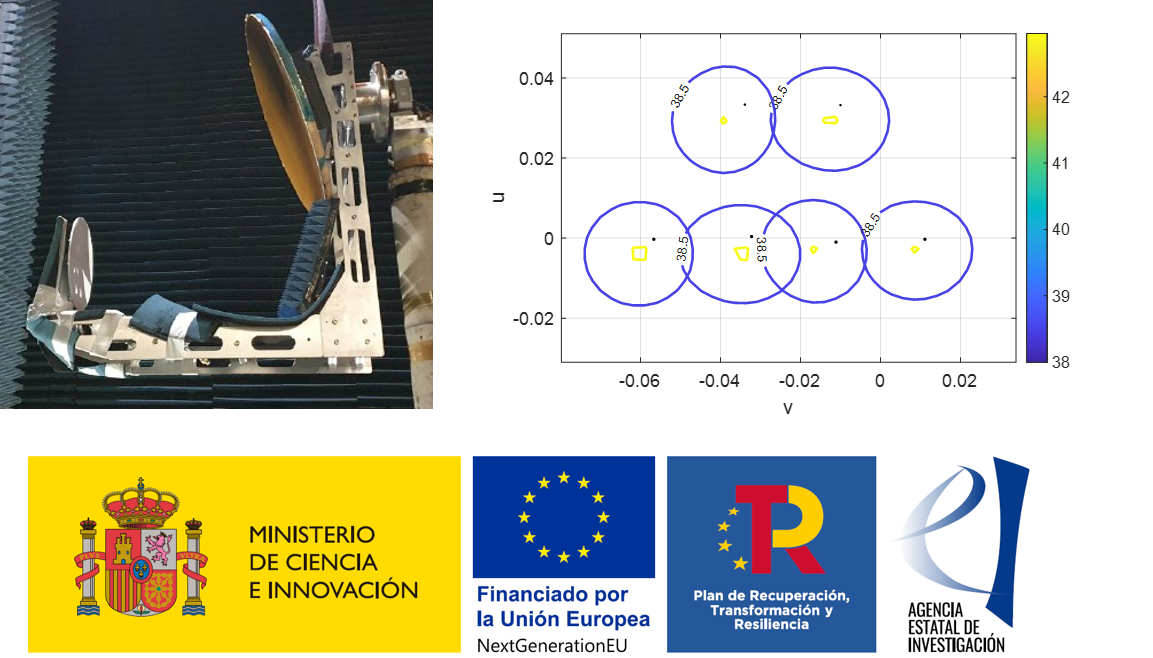
“New hybrid methods for optimizing high-frequency circuits and antenna arrays”, (TEC2017-83352-C2-1-P)
ADDMATE: “New additive manufacturing technologies for passive devices in microwave and millimeter bands”, (TEC2016-76070-C3-2-R)
New additive manufacturing techniques are changing the development model in many technology sectors. The objective of the Project has been to develop waveguide devices for space applications and power combination using Selective Laser Sintering using aluminum and copper powder mixtures. Different devices such as modal converters, polarizers and transitions have been manufactured.
SPADERADAR: Space Debris Radar
Project Website: http://spaderadar-cm.com/es/el-proyecto/
New technologies have been developed in this project for a space debris detection radar. It should be noted that there are more than 100,000 objects with diameters less than 10 cm orbiting the earth at speeds of 10 km/s, posing a danger to commercial satellites. It has been necessary to use very high frequencies (94 GHz) to achieve the resolution that allows to detect small objects. Different antennas with electronic scanning capability and accurate arrival angle measurement capability have been designed and built. Various subsystems have been designed, built and measured, and a complete radar prototype has finally been built and validated as proof of concept.


